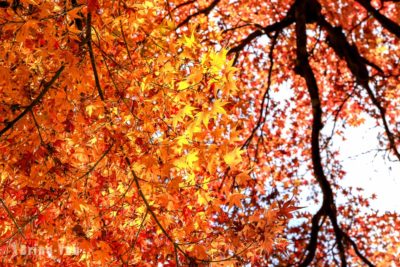If you are in Kyoto and want to see some beautiful maple leaves, there are so many places to choose from. However, if you happen to be in Arashiyama and haven’t decided on a specific spot, you can visit Jōjakkō-ji Temple, which has a high concentration of autumn foliage.
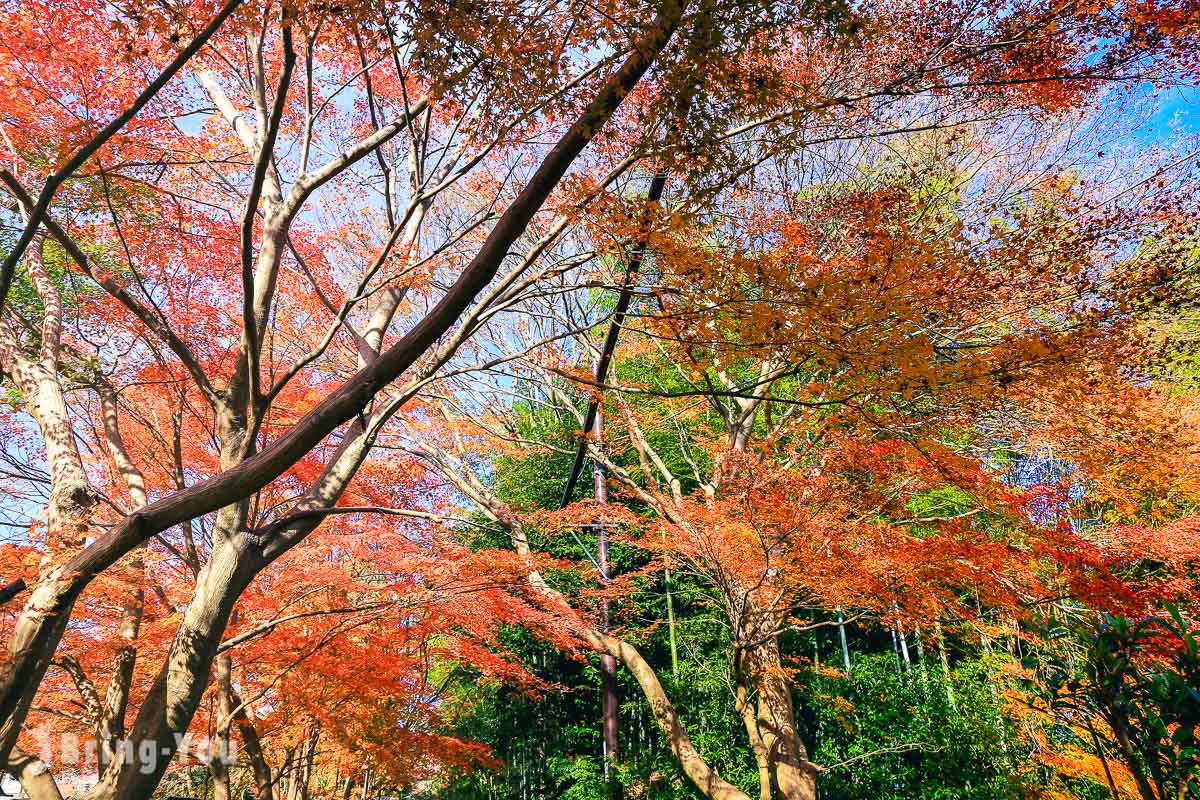
Located in the secluded and tranquil area of Ogura Mountain in Sagano, Jojakkoji Temple is said to have been the former mountain villa of the poet Fujiwara no Sadaie, known as “Shiguretei”. Its history is quite ancient. When you visit Jojakkoji Temple in the autumn, walking up the stone steps, you can feel the sunlight shining through the treetops onto the lush green moss, and then stroll through the red maple leaf tunnel formed by the maple leaves on both sides, just like a beautiful autumn painting.
Extended reading: Recommended Kyoto Maple Leaf Viewing Spots
This post shares with you the scenery of my two visits to Chojyuganji Temple, including the cherry blossom season and the autumn foliage season.
Transportation to Changji Guang Temple
- Address: 3 Sagaogurayama Oguracho, Ukyo-ku, Kyoto
- Ticket: 500 yen
- Opening hours: 09:00~17:00 (entry until 16:30)
- Official website
Located on the mountainside of Kyoto’s Ogura Mountain, Jōjakkō-ji Temple is a distance away from the bustling Arashiyama Main Street and Bamboo Grove Path. Whether you take the Kyoto tram (Randen) and get off at “Arashiyama Station” or take the JR Sagano Line and get off at “Saga-Arashiyama Station,” you will have to walk for about 15-20 minutes to reach Jōjakkō-ji Temple.
If you have already planned to take the Sagano Romantic Train during your Kyoto trip, the closest way to get to Jōjakkō-ji Temple is to get off at “Torokko Arashiyama Station” and walk there.
Transportation Guide: 【Kyoto Arashiyama Transportation】All You Need to Know About Getting to Arashiyama for a Day Trip
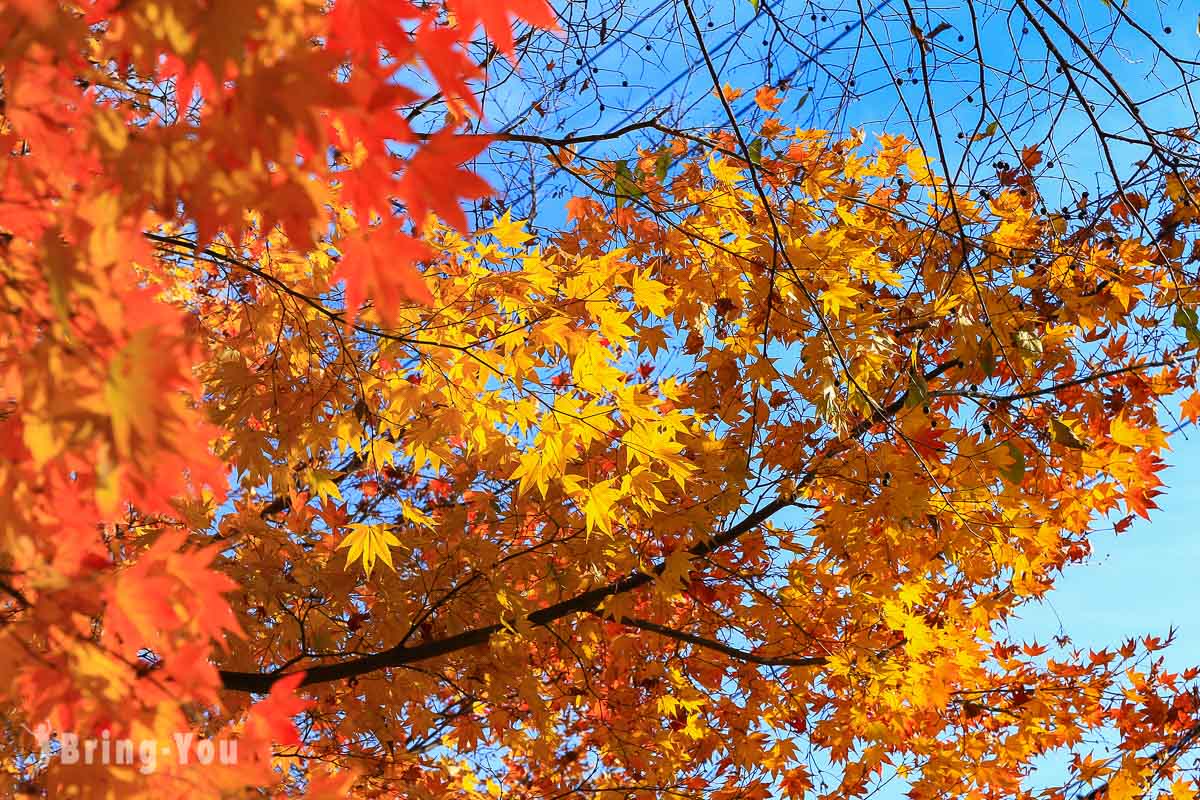
Along the way, there are already many maple leaves to take pictures of when walking to Changjiguang Temple.
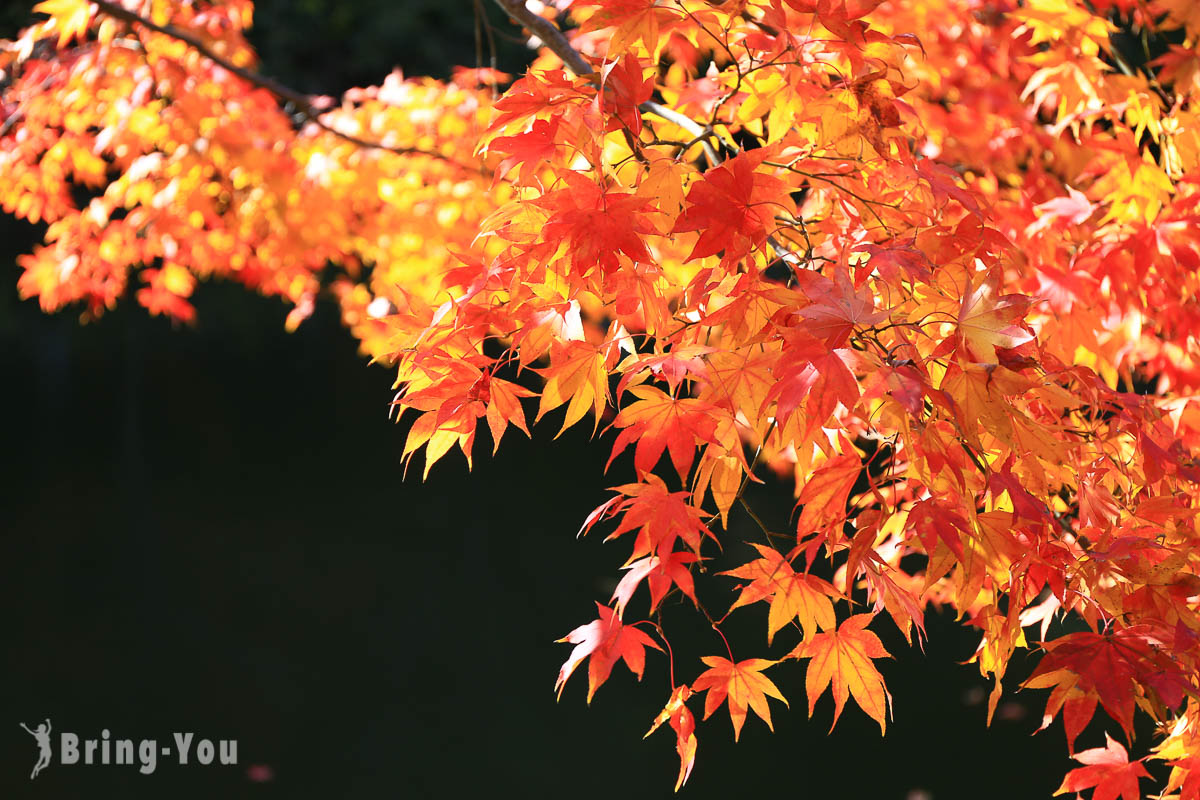
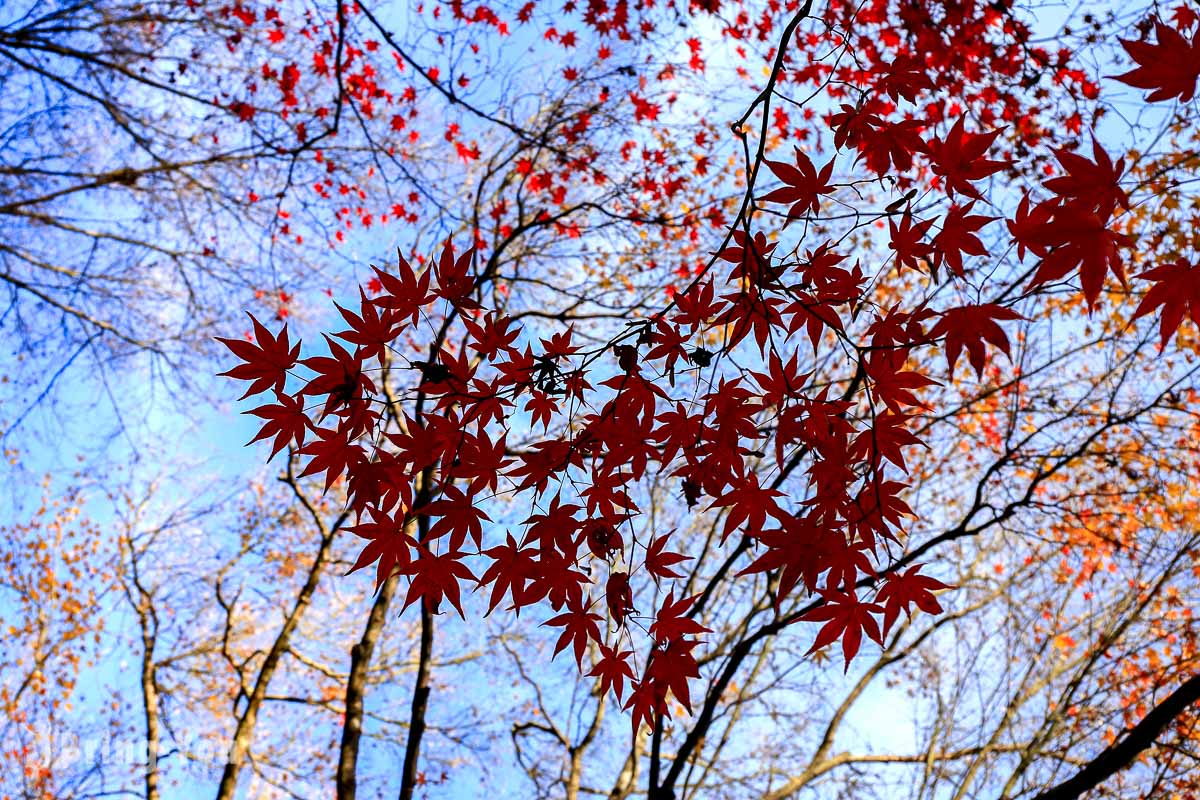
Changjiguang Temple Attractions
When arriving at the ticket office, Piaor, on her first visit to Changjiguang Temple, chose to come during cherry blossom season. There is a notice board at the entrance indicating the current state of the cherry blossoms, as well as a warning that tripods cannot be used inside the temple. During the maple leaf season, a gorgeous orange maple tree greets you outside.
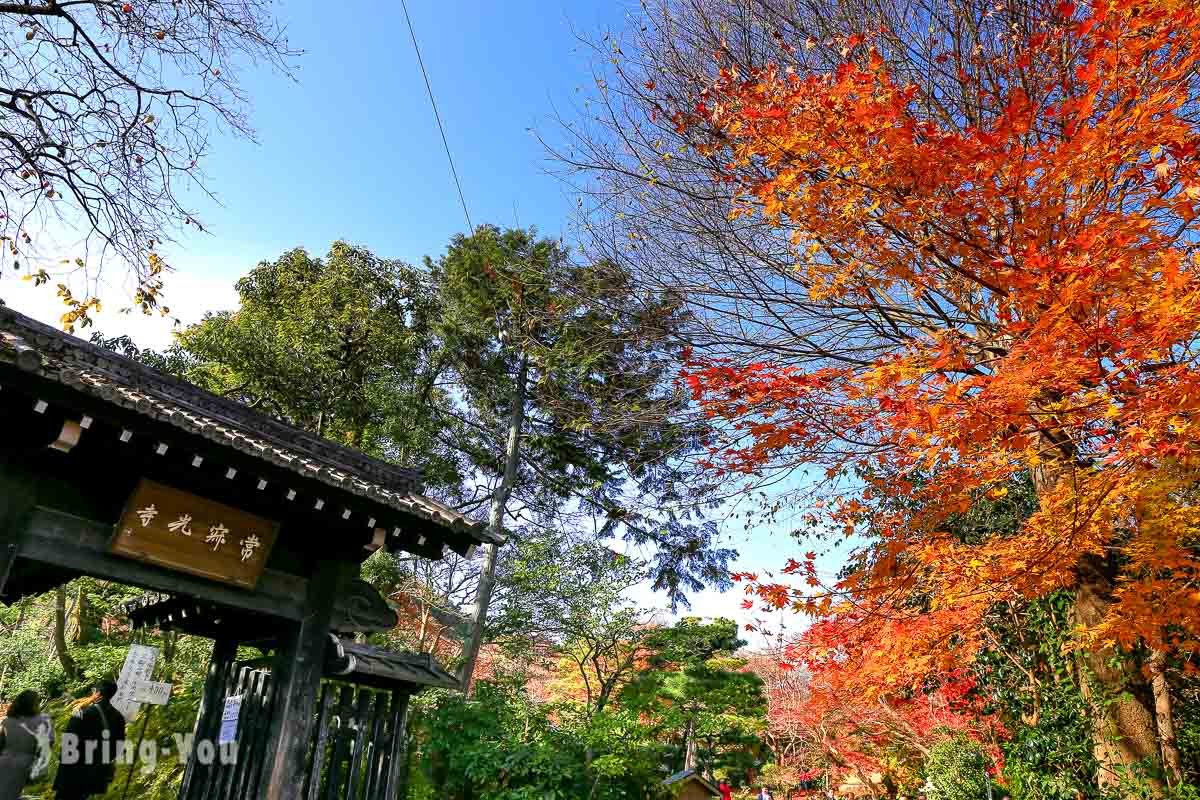
Changjiguang Temple is not big. Follow the worship route from the mountain gate and walk through the Nioumon Gate, the main hall, the Myoken Hall, the Pagoda of Many Treasures, the observation deck, and the bamboo forest. If you come during the maple leaf season to take photos, it takes about an hour to complete the circle.
Moss
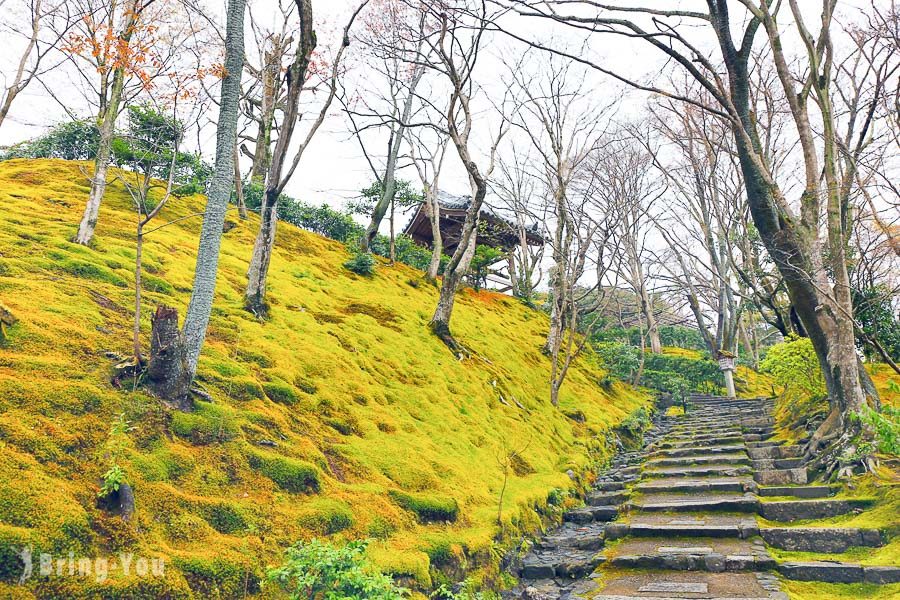
Walking up the gentle slope and stone steps, the ancient path of Changjiguang Temple is covered with thriving green moss. When I first visited, the cherry blossoms had already been washed away by the rain, leaving only the desolate scenery of withered trees and moss. However, I was the only one on the entire slope, and the tranquil atmosphere made it a great experience to appreciate the green moss.
Arashiyama’s famous moss temple: Giouji Temple: a serene and melancholic temple nestled in the Arashiyama forest with lush green moss
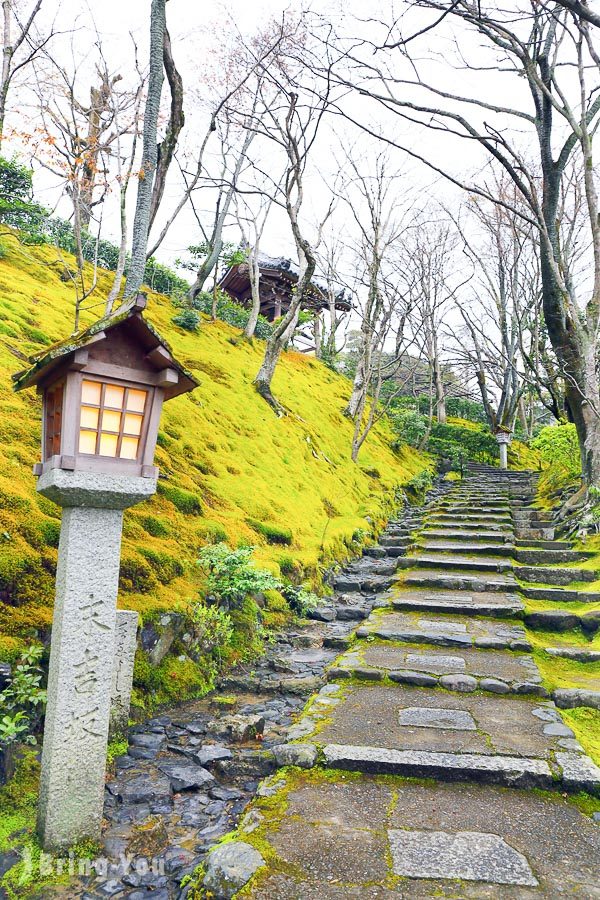
On my second visit during the peak of autumn foliage season, it was a sunny day but the maple leaves on the Moyagoshi slope at Jikkoin Temple had already fallen. If you come during the peak season, the brownish-red maple leaves falling on the green mossy rocks create a stunning view, as if the green path has turned into a tunnel of red leaves. Whether you look up or ahead, the view of the autumn foliage is breathtakingly beautiful.
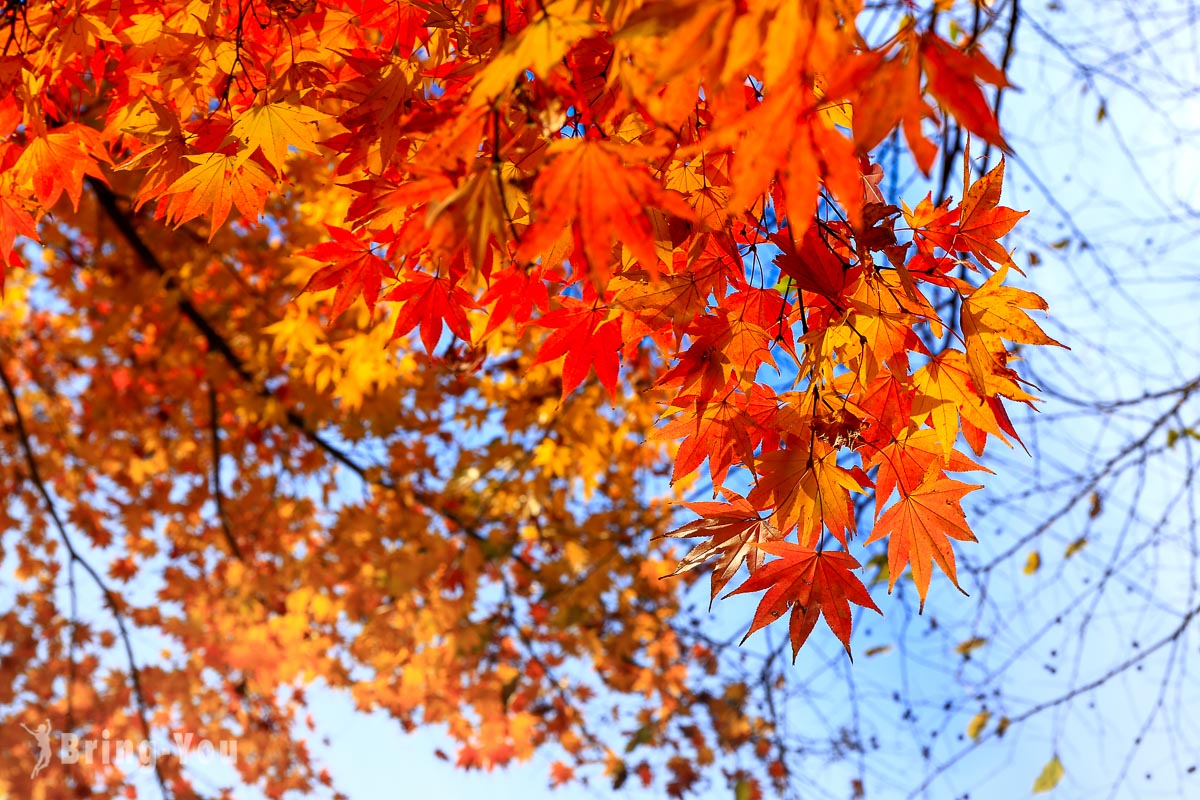
However, the maple trees in other areas have not completely withered yet, so we can only capture some artistic shots of the maple leaves.
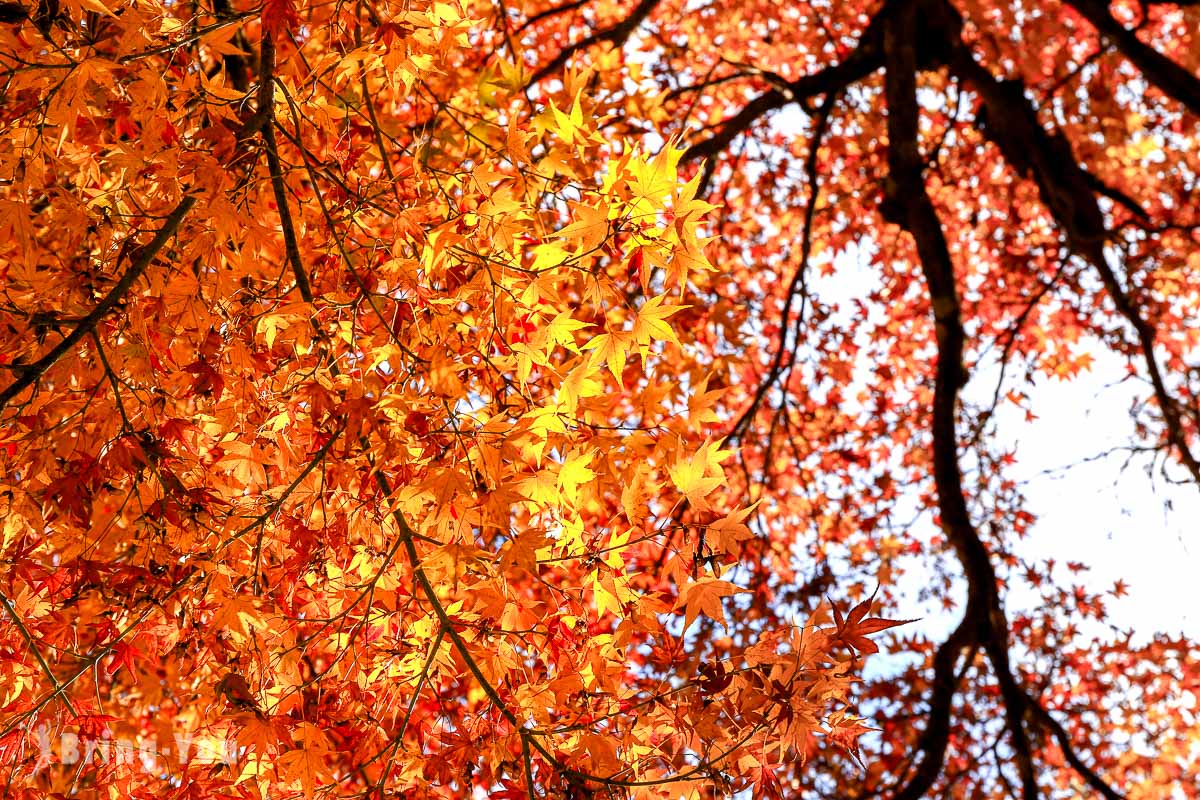
Fortunately, the weather was good, and even without the backdrop of temple scenery, the pure shots of maple leaves with sunlight shining through the shadows were also beautiful.
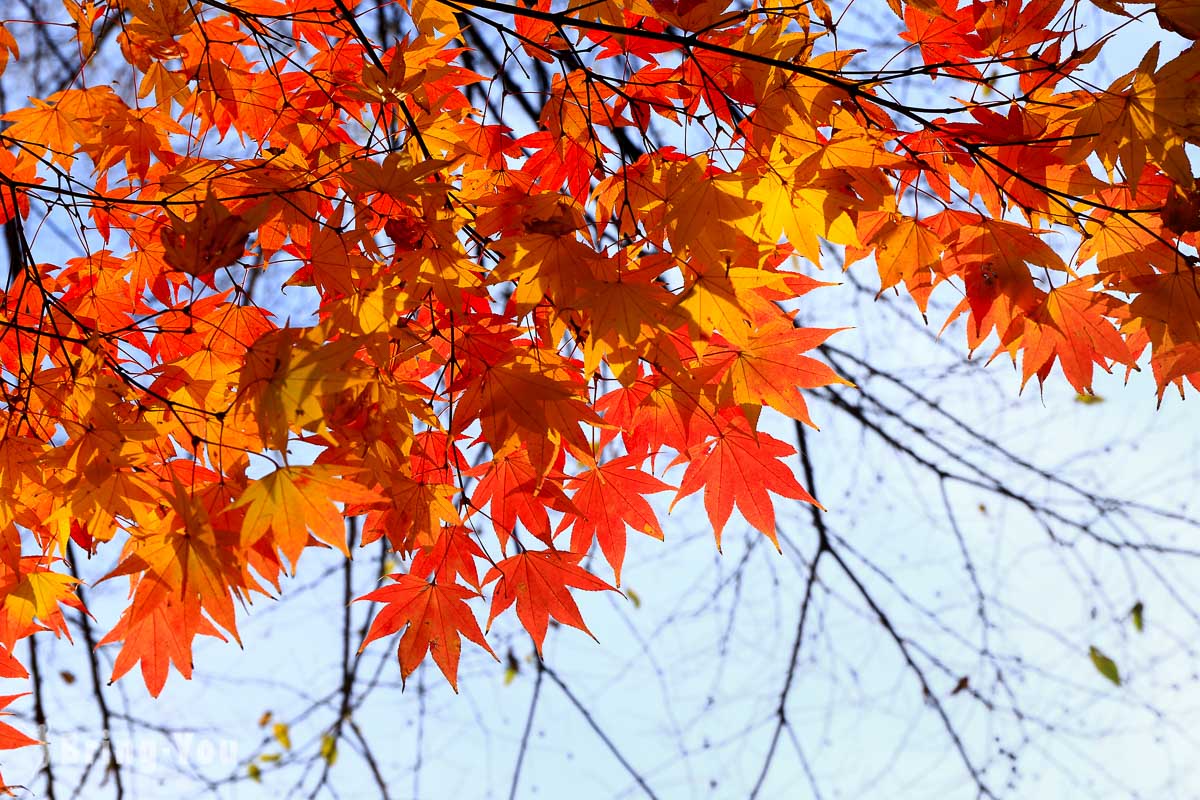
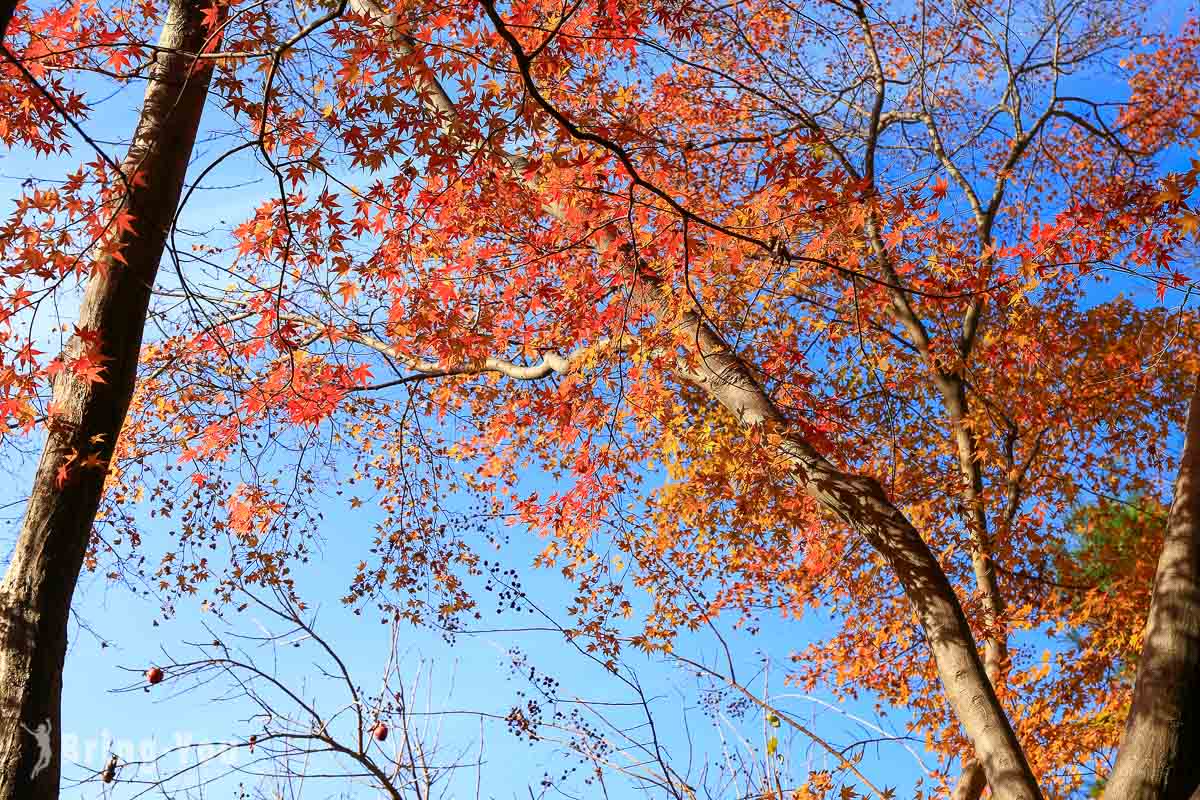
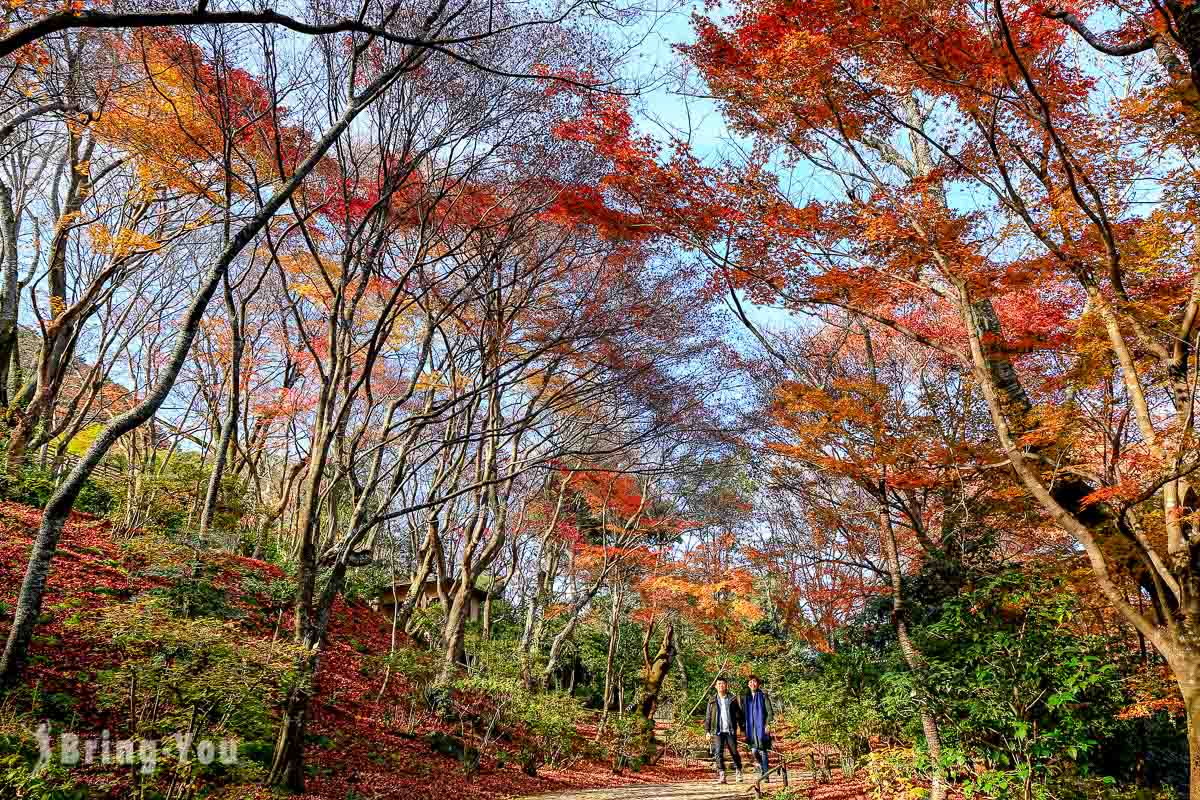
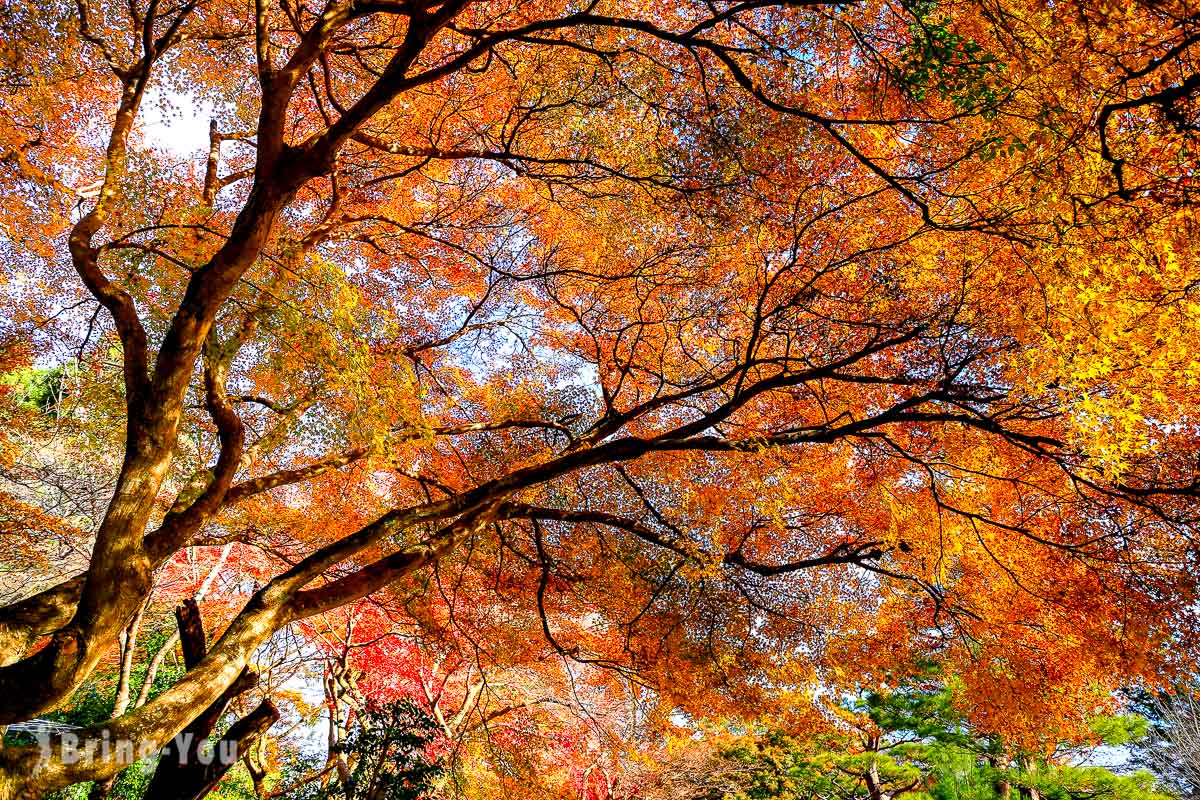
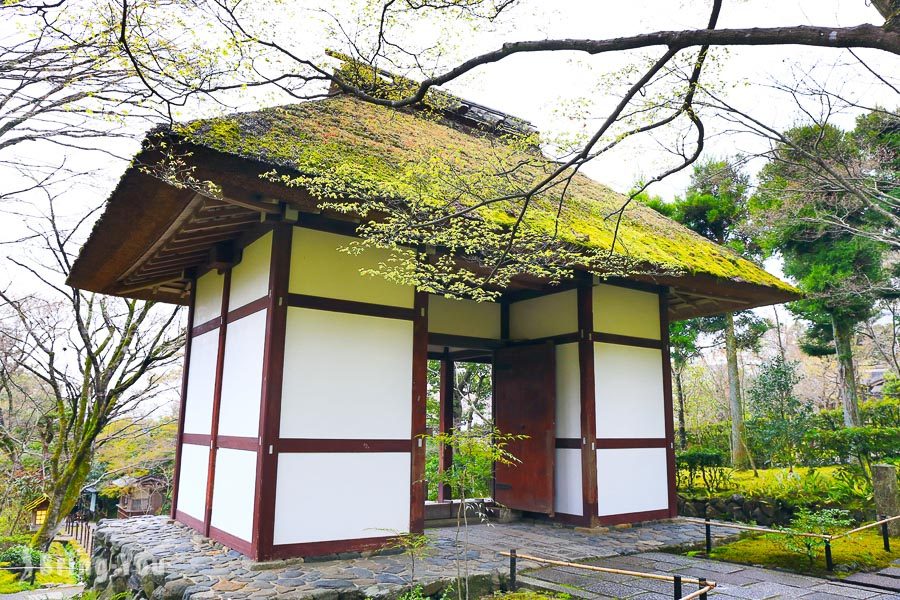
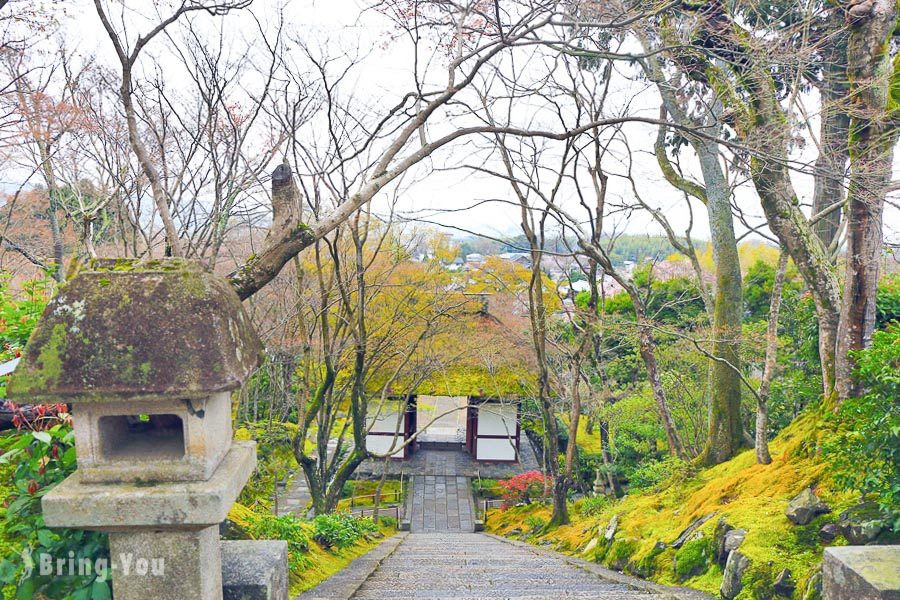
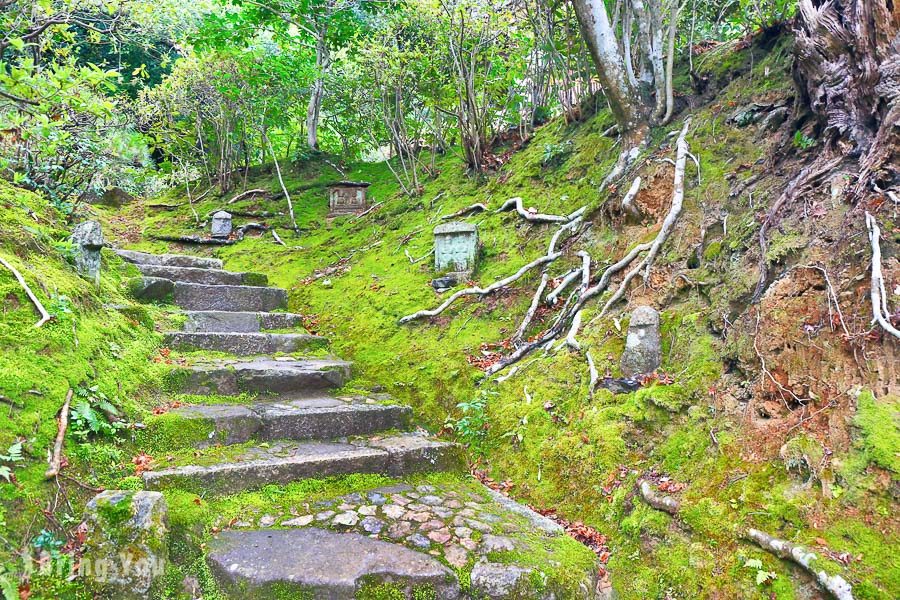
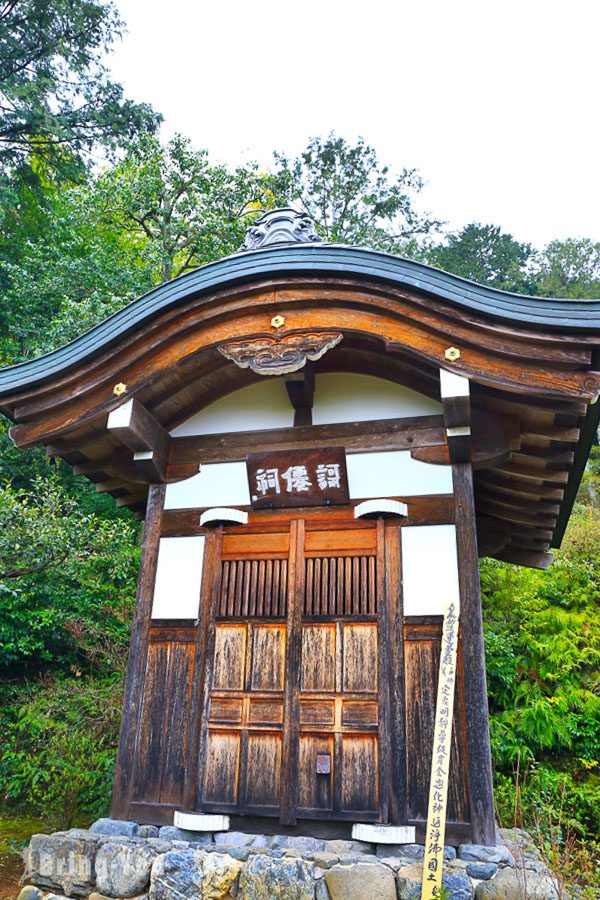
Renwang Gate
The Niomon Gate of Jōjakkō-ji Temple was relocated from the southern gate of the main temple of Hōkokusan Honkoku-ji in 1616, and is the oldest building within the Jōjakkō-ji Temple grounds. Its thatched roof is its most distinctive feature. The Niomon Gate is surrounded by maple trees with thatched roofs and adorned with red, orange, yellow, and green maple leaves.
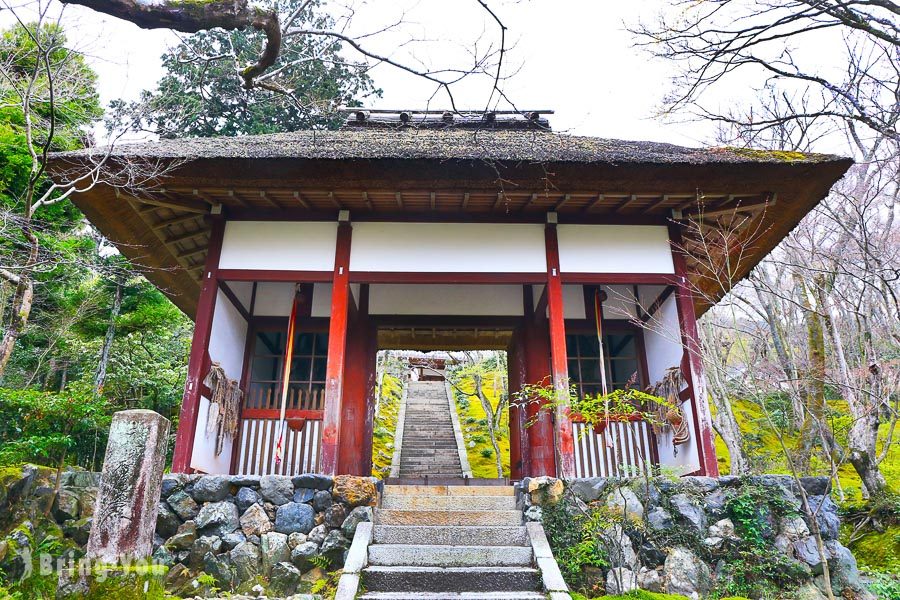
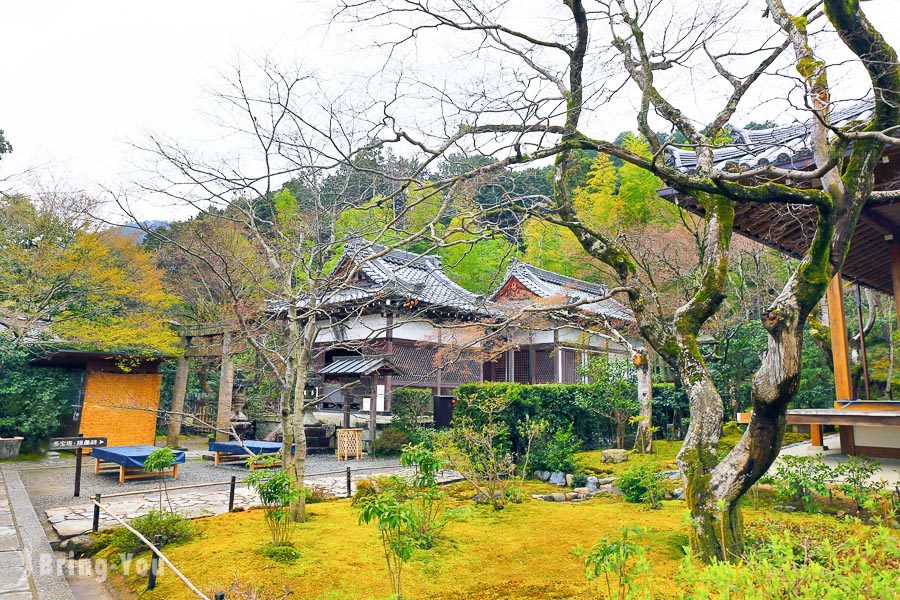
This Class
The main hall of Chojyukoji Temple was relocated from the guest hall of Fushimi Momoyama Castle, and there are maple trees and a pond behind it.
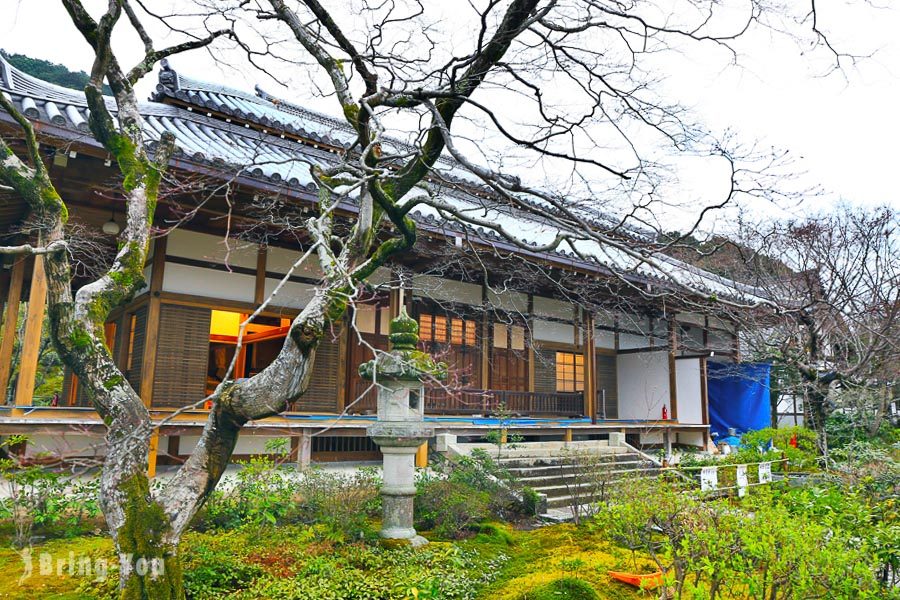
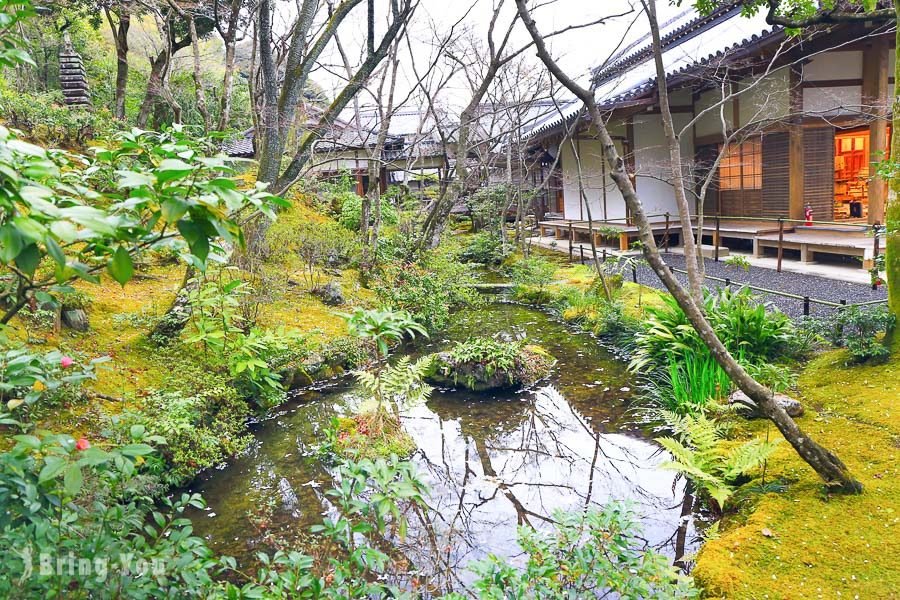
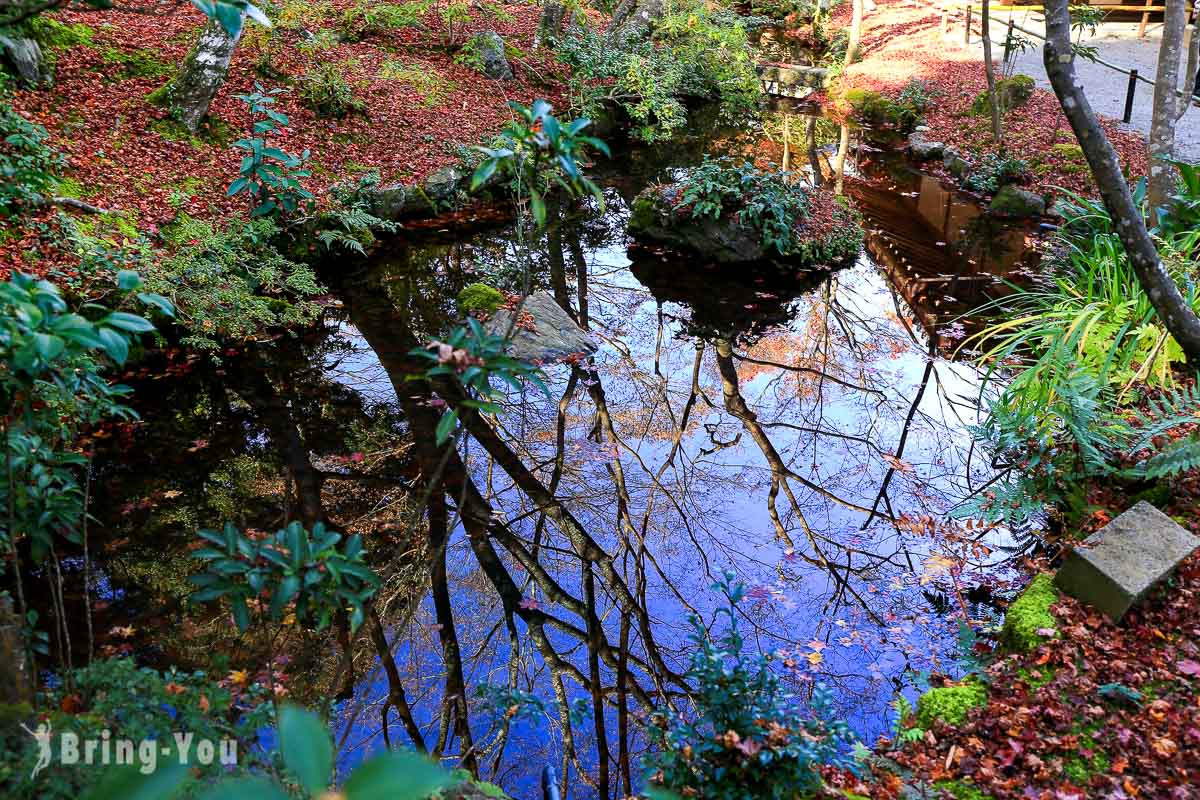
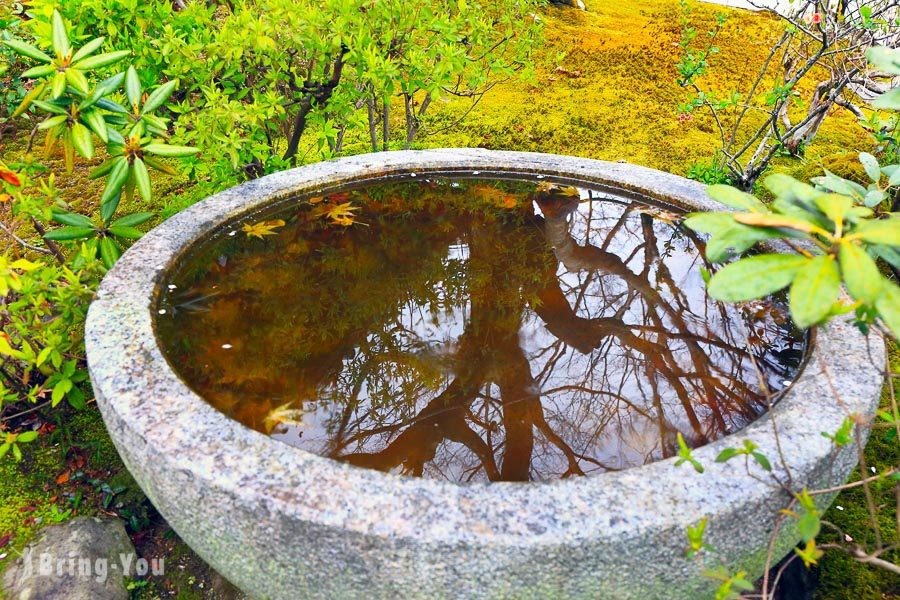
If it is the peak season of maple leaves, when the naturally falling maple leaves float into the pool, the water surface presents an almost all-red scene, creating a sacred atmosphere with a sense of vitality, which also makes many people stop to take photos and leave memories.
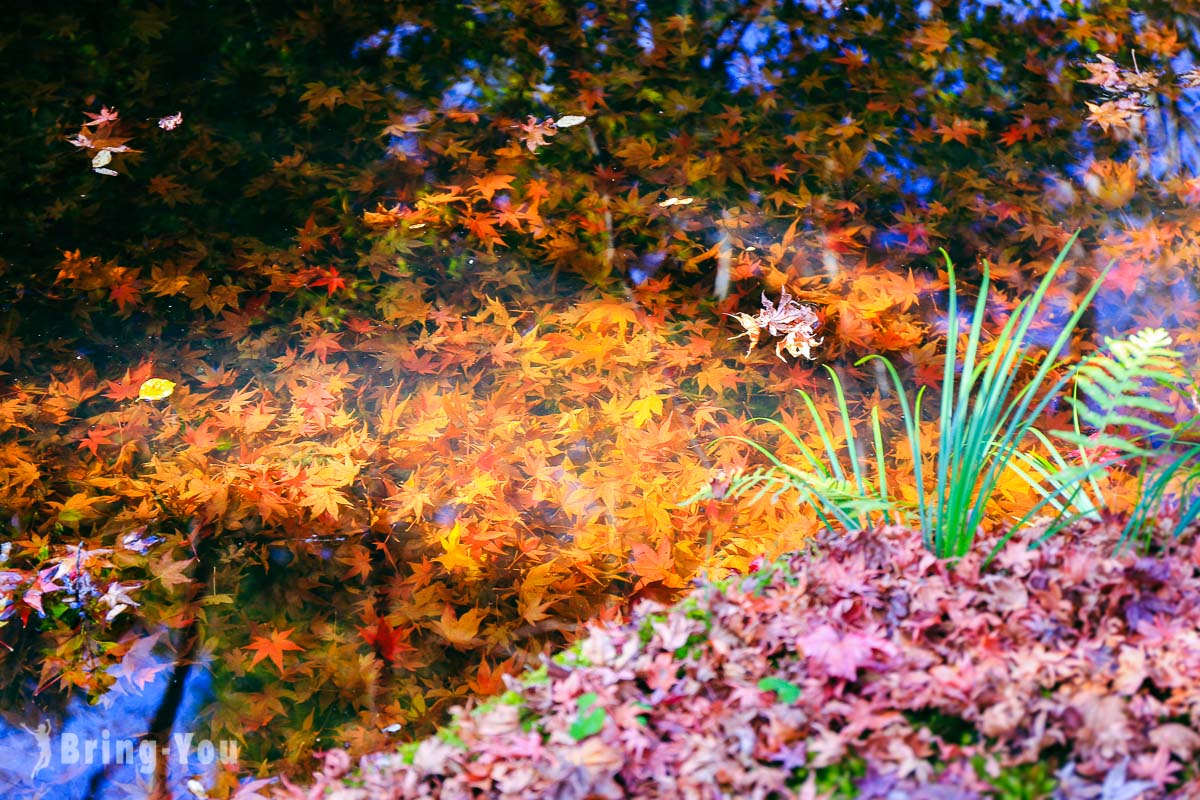
The Origin of the Miao Jian Bodhisattva at Changji Guang Temple
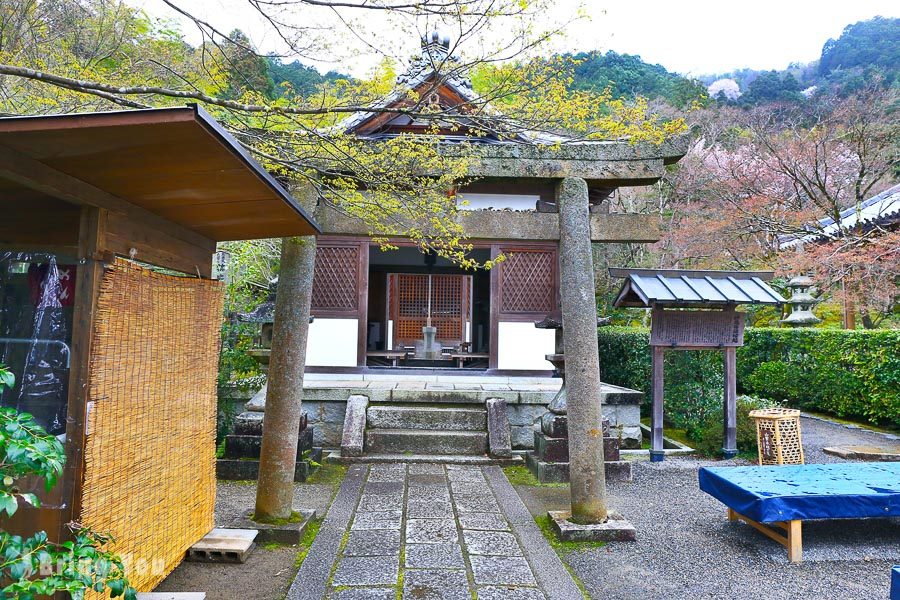
The place where Miao Jian Bodhisattva is enshrined.
Bringing Good Fortune and Luck
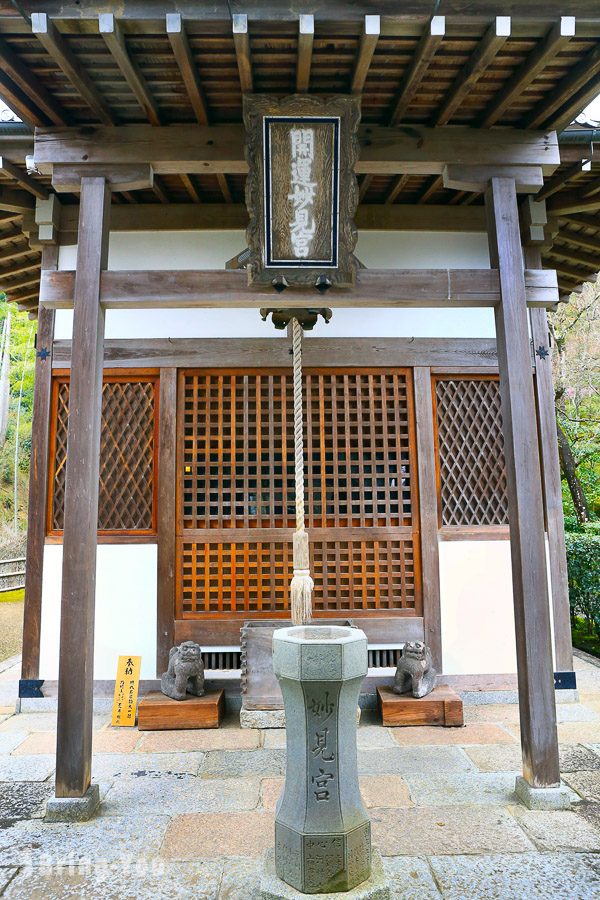
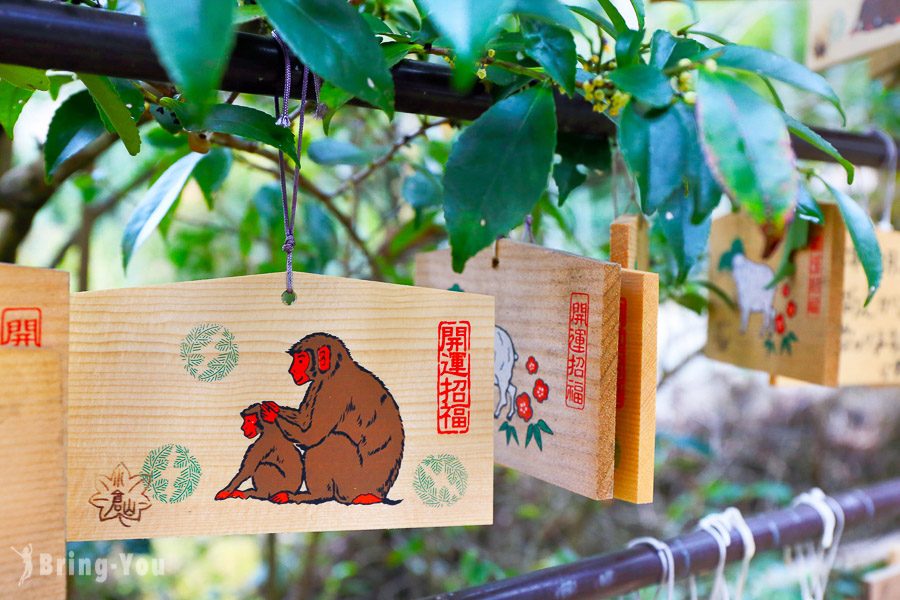
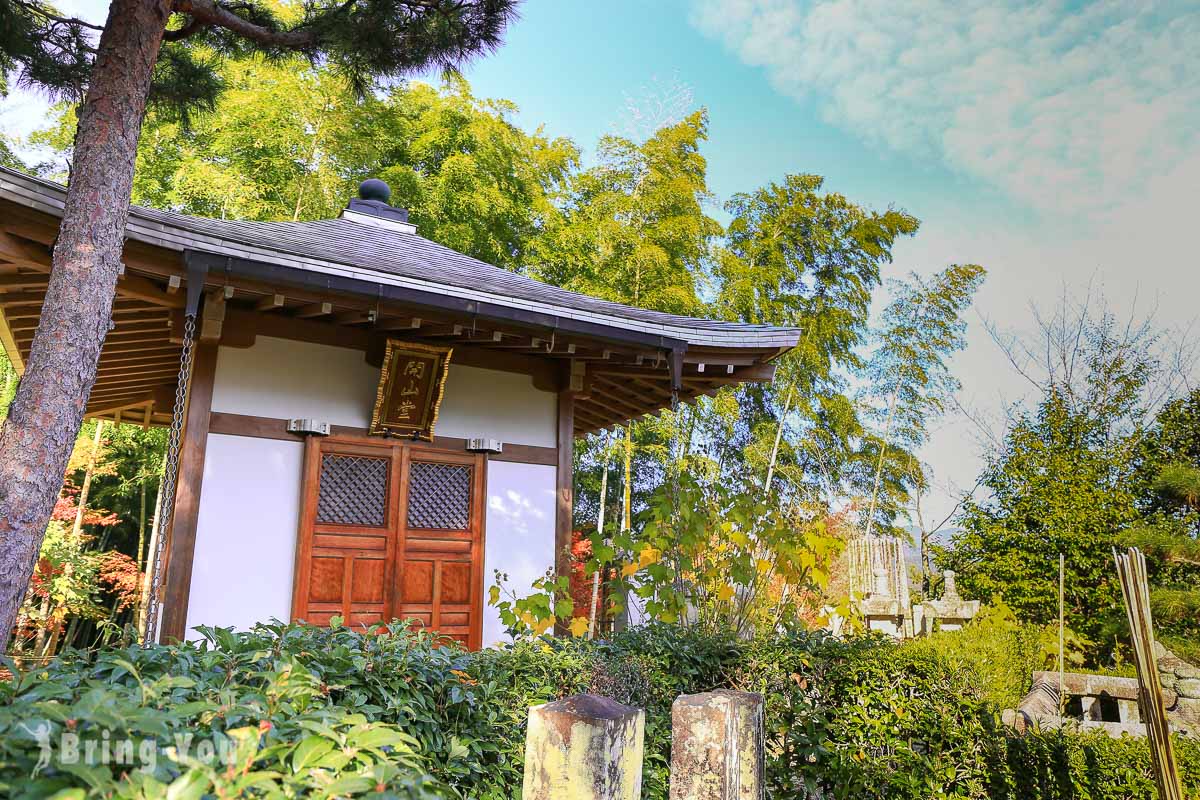
Bell Tower
The clock tower surrounded by maple leaves was built in 1642. It is said that during World War II, the bell was requisitioned and melted down for military equipment. The bell we see now was designed by Dr. Ichiro Aoki in 1973. The clock tower rings the bell every day at noon and 5 pm.
DuoBaoTa
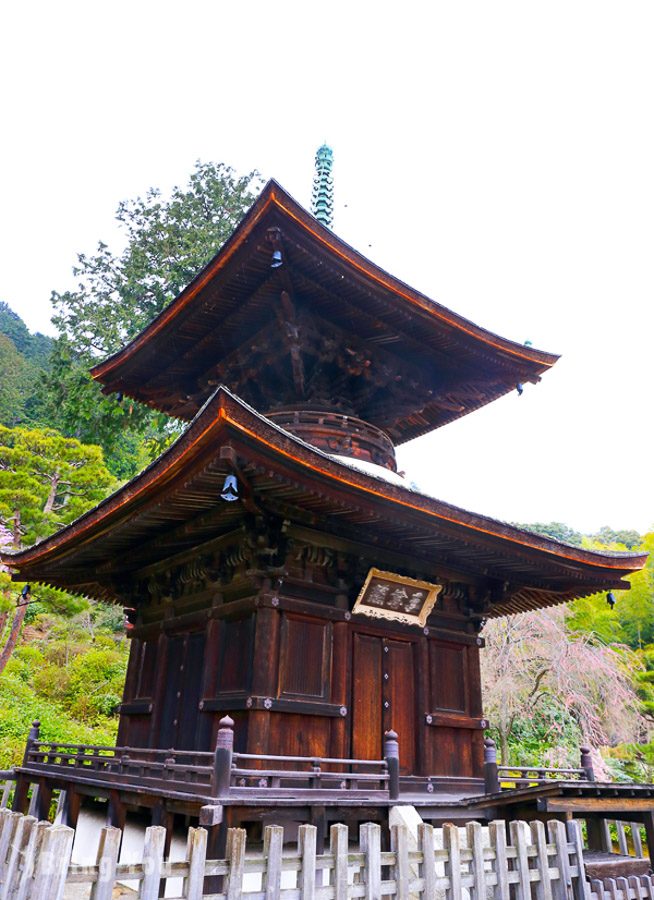
After climbing the Taho Pagoda at the Jingo-ji Temple, you can overlook the Arashiyama Mountains and the Kyoto Plain in the distance from the mountaintop. On rainy days, it only has a gloomy appearance.
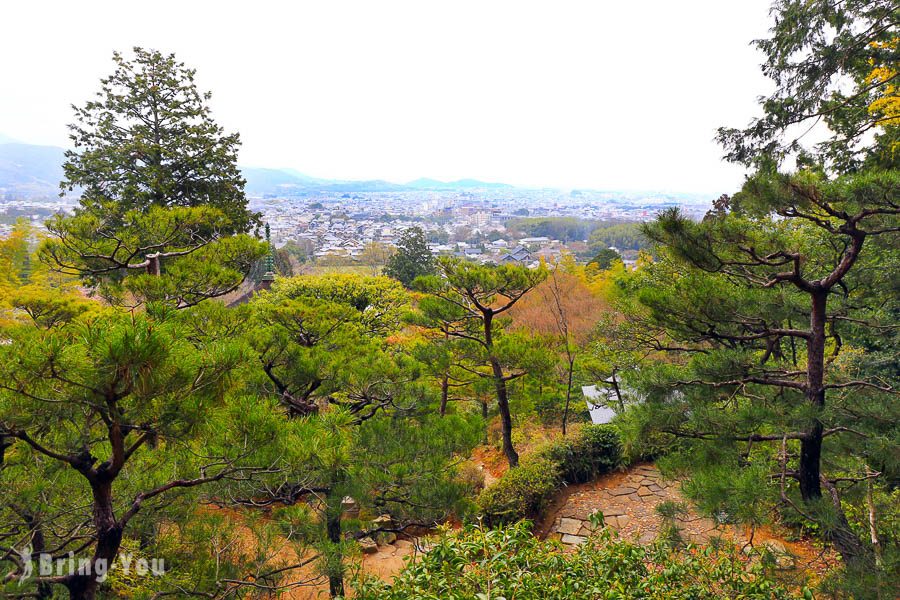
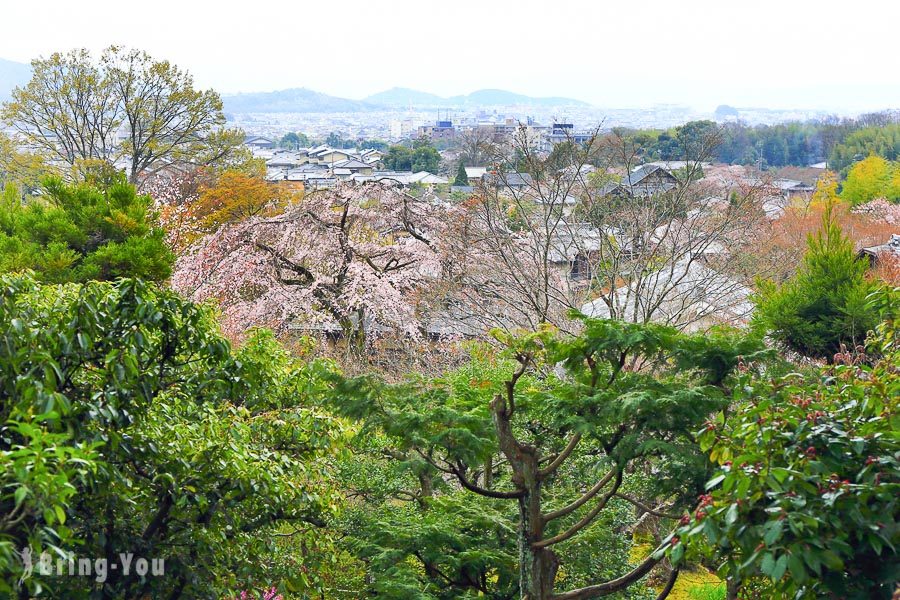
During the peak season, you can harvest the abundant works of nature in autumn, including yellow ginkgo leaves, bright red and green maple leaves, and layers upon layers of red leaves covering the ground. Unfortunately, most of them had fallen when I arrived.
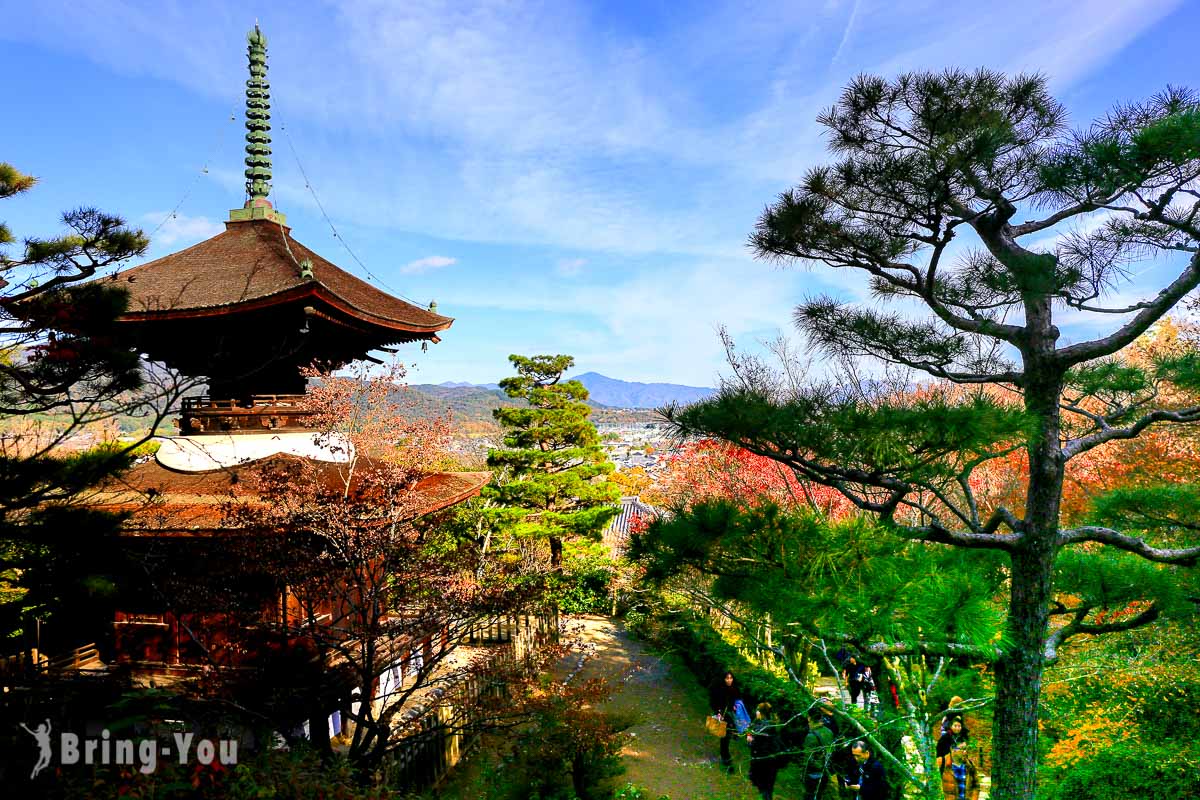
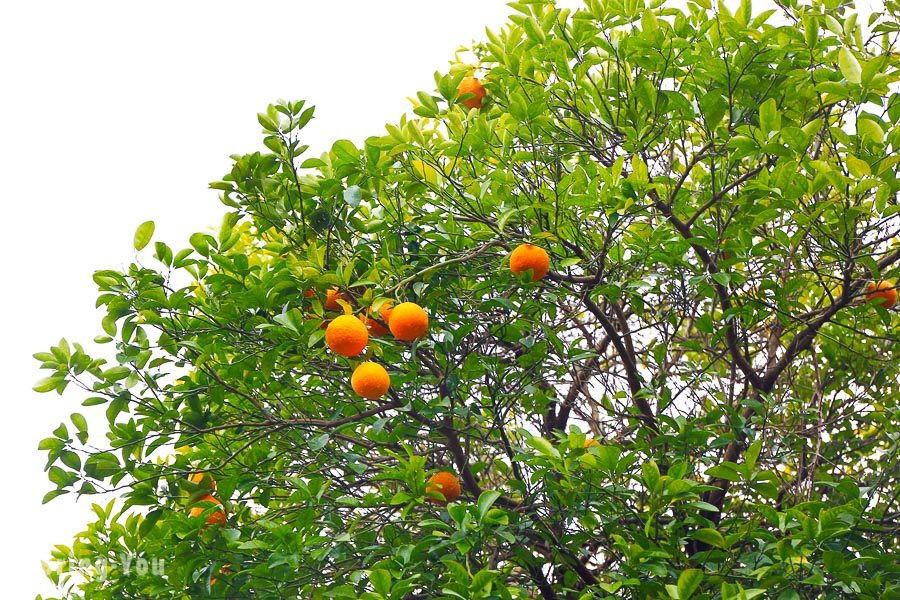
Chojun Kongo-ji Temple is a place that looks stunning on a good weather day, but can be quite desolate on a bad weather day. The maple leaves scenery in Kyoto is truly impressive, and if you come during cherry blossom season, I would recommend going directly to Tenryu-ji Temple to take pictures of the cherry blossoms!
Must-visit in Arashiyama: [Cherry Blossom Fun in Arashiyama] Tenryuji Temple: World Heritage Site with Weeping Cherry Trees in Full Bloom
